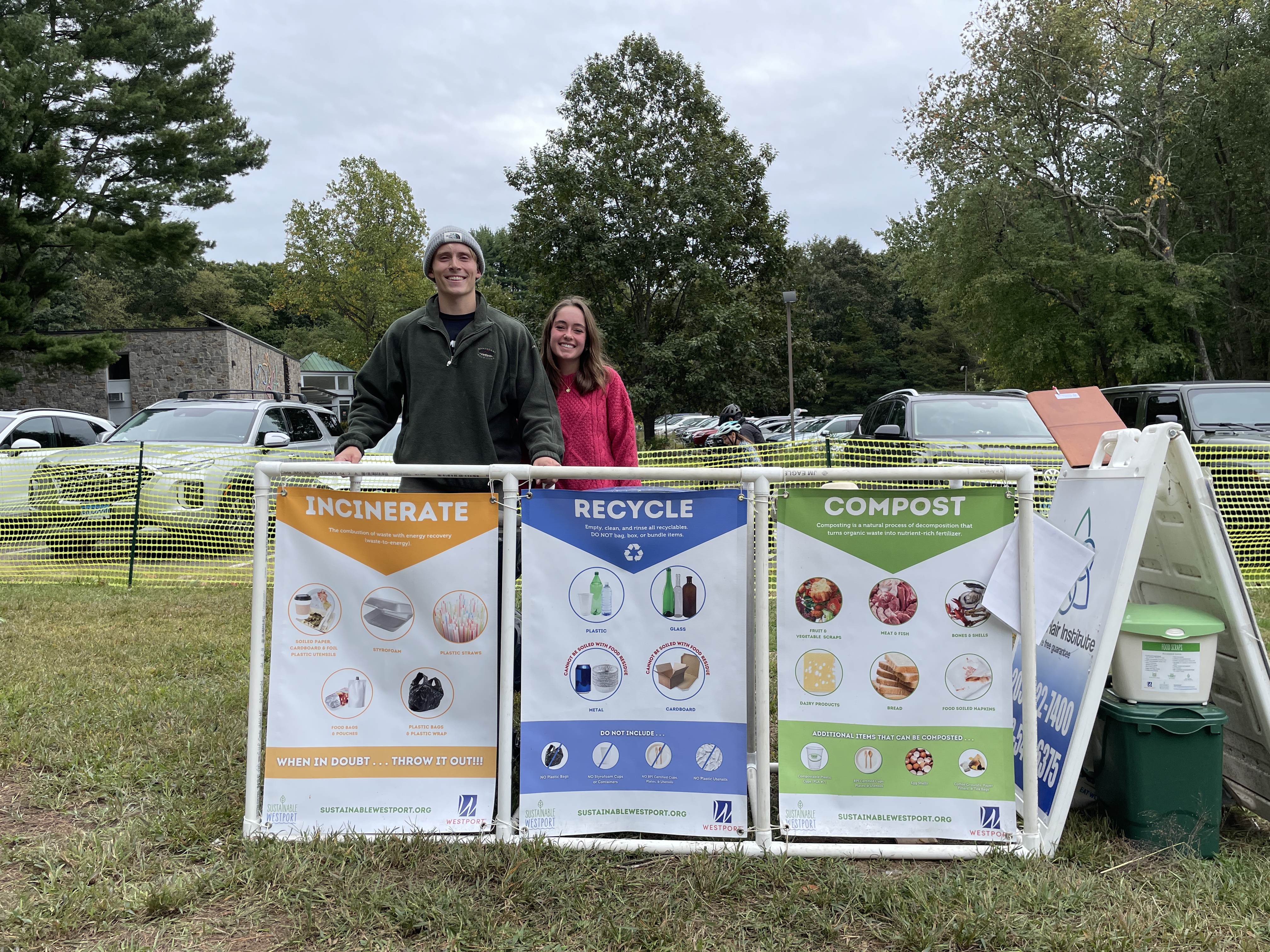Container, 1 column
1 column
1/2 column
1/2 column
1/3 column
1/3 column
1/3 column
1/3 column
2/3 column
1/4 column
1/4 column
1/4 column
1/4 column
1/4 column
3/4 column
1/5 column
1/5 column
1/5 column
1/5 column
1/5 column
1/5 column
4/5 column
1/6 column
1/6 column
1/6 column
1/6 column
1/6 column
1/6 column
1/6 column
5/6 column
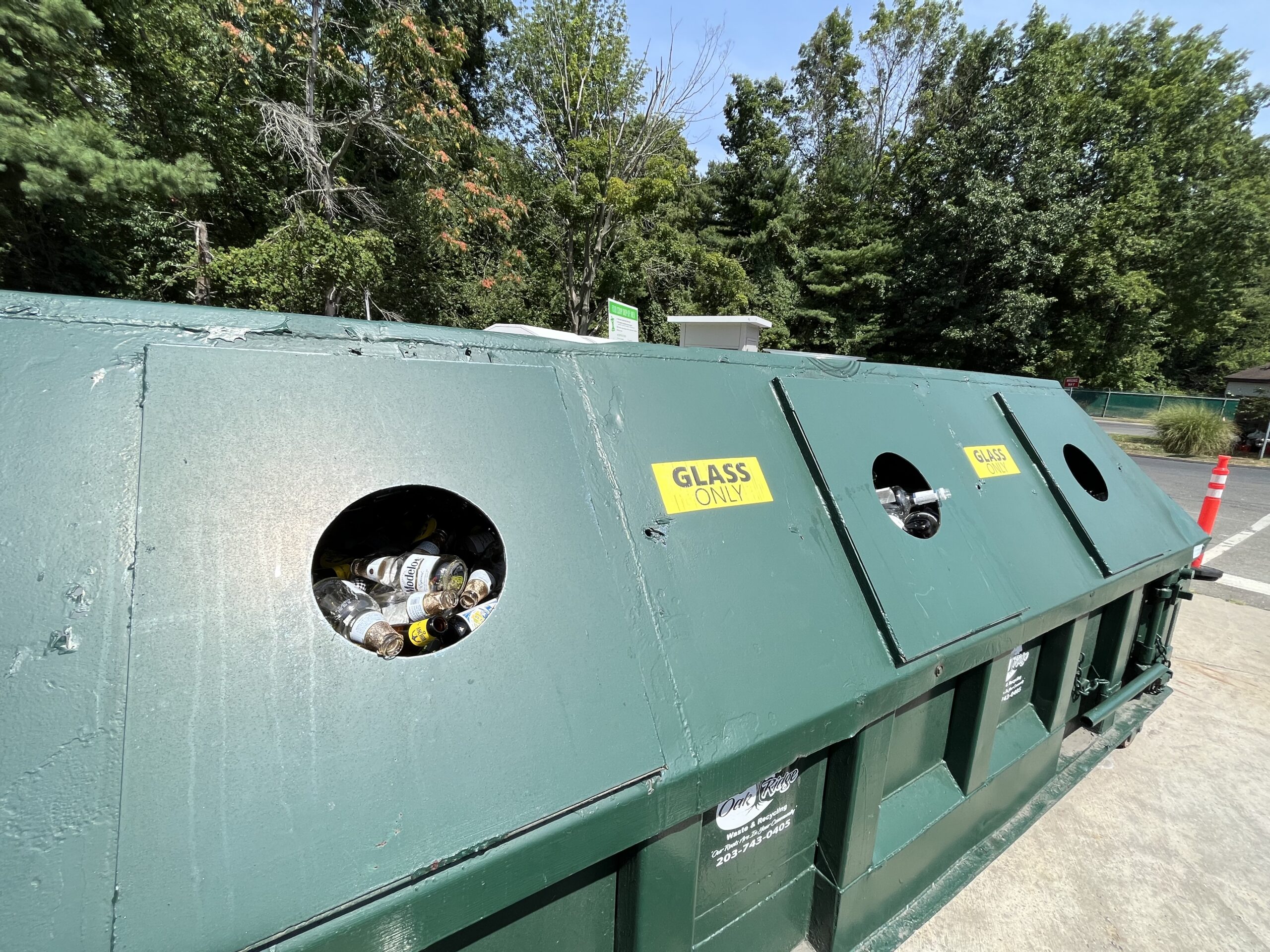
Separate Glass at the Transfer Station – A Better Way to Recycle
Sustainable Westport partnered with the Town of Westport Department of Public Works to develop a Glass Recycling Brochure to inform residents about the benefits of recycling glass separately at the Westport Transfer Station. Since the town launched its separate glass recycling program in February of 2022, over 26 tons of glass has been collected!
Continue reading to learn more about why the Town of Westport is encouraging residents to recycle their glass separately and for instructions on how to dispose of glass properly at the Transfer Station.
What is the problem?
Recycling in Westport is either collected by a private hauler or directly deposited by residents at the Westport Transfer Station. Once collected, the mixed recycling is transported to a Materials Recovery Facility (or MuRF) and inspected for contamination. The mixed recycling then travels over conveyor belts, screens, optical scanners, forced air, and magnets as people and machines sort through the paper, plastic, glass, and metals to group like materials together. Then, the sorted recyclables are baled and sold as commodities for reuse.While it is convenient for residents to mix recyclables together in the same bin, it can also present problems as well. Glass containers commonly shatter during the collection process. Once broken, the shards of glass attach themselves to paper, cardboard, and other recyclables, contaminating them and reducing their market value.
Machines and employees at the MuRF cannot remove all the broken glass from the other recyclables, or the bits of paper, bottle caps, metal, and straws that contaminate the glass containers. Once contaminated, there is a substantial cost to clean the glass before it can be recycled. If the contaminated loads cannot be cleaned, they are sent to landfills or the incinerator, and the additional costs passed on to the Town of Westport.
What do you mean by “substantial cost”?
It is important to note that the cost of glass, or any recycled goods, constantly changes based on the market. The price fluctuates from month to month, however here are the contaminated vs non-contaminated costs of recycling glass from earlier this year:
- April 2022: Contaminated cost/tons $65.00 vs non-contaminated cost/ton $40.56
- May 2022: Contaminated cost/tons $65.00 vs non-contaminated cost/ton $37.47
As you can see, there is roughly a $20 difference per ton, which adds up quickly and is passed along to the town (and taxpayers!).
What is the solution?
When glass is separated from mixed recycling, each recycling stream is freed from contamination by the other. The clean, separated glass can now be recycled into new products, and the high-quality mixed recycling commodities become more marketable.
In order to manage increasing costs, and the quality of our recyclables, the Town of Westport has now added a separate glass collection container to the Westport Transfer Station. For instructions on how to recycle your glass, follow the instructions below.
How do I recycle glass?
While residents may still recycle glass with their mixed recycling, it is strongly encouraged that you recycle your glass separately at the Westport Transfer station. To do so, please follow the instructions below:
- Rinse your glass containers and remove lids, caps, and corks.
- Place in a box separate from your mixed recycling bin.
- Drop-off at the Westport Transfer Station during operating hours.
It is essential that you recycle ONLY acceptable glass. Unacceptable items will contaminate the entire load and it will either be rejected or cost the Town of Westport contamination fees.
Acceptable Items:
- Beverage Bottles
- Juice Jars
- Condiment Bottles
- Food Jars
Not Accepted:
- Candle Jars
- Ceramic
- Clay
- Crystal
- Drinking Glasses
- Lightbulbs
- Mirrors
- Ovenware
- Perfume/Cologne Containers
- Window Glass

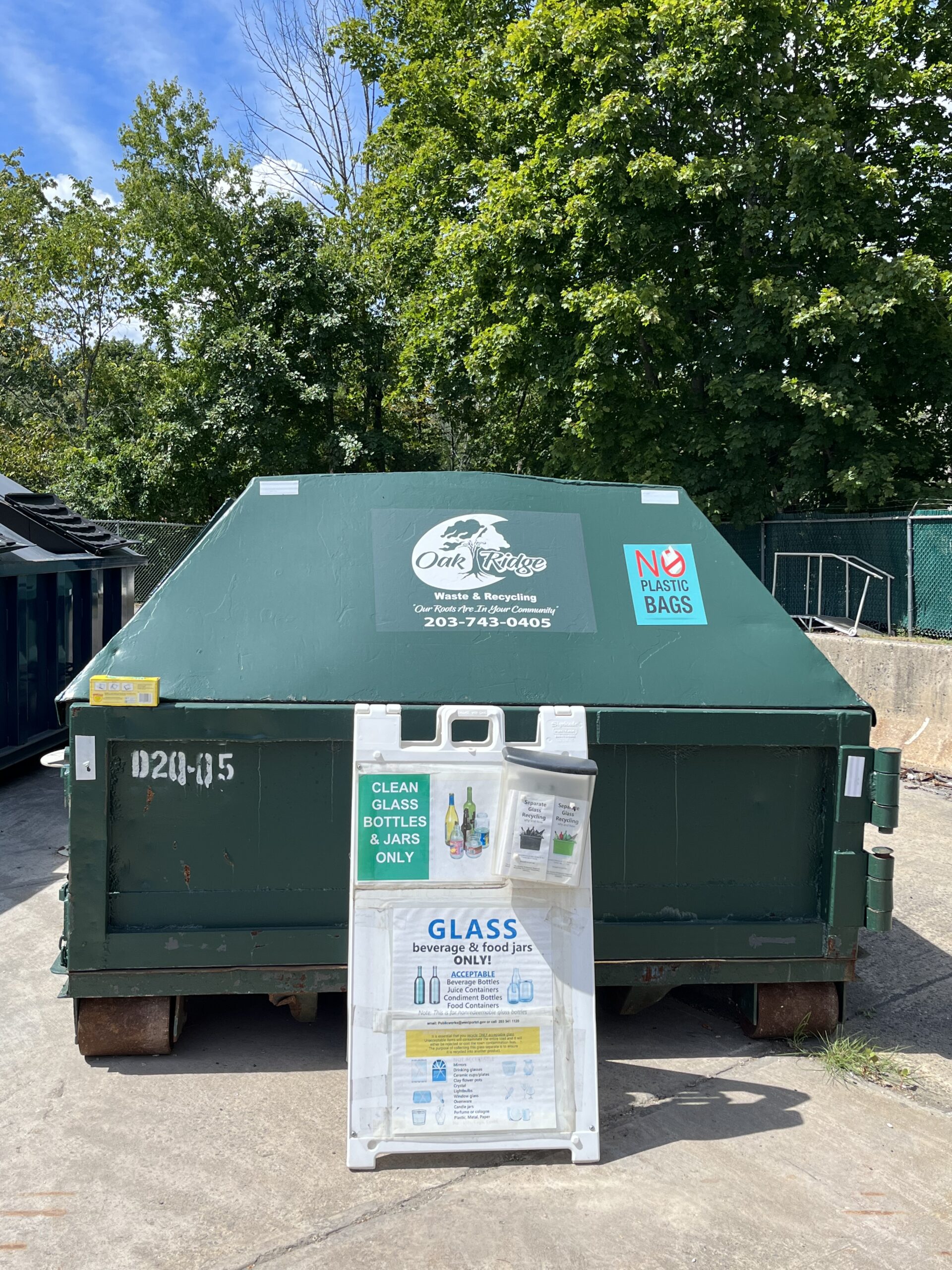
Sustainable Westport Launches Zero Waste Stations at Community Events
Partnering with the Town of Westport, Sustainable Westport developed mobile “Zero Waste Stations” to help reduce waste at popular community events.
Our Zero Waste Stations, manned by Sustainable Westport volunteers, helped advise and educate event attendees about their waste choices: COMPOST, RECYCLE, or INCINERATE (Trash).
This fall, the Zero Waste Station visited Slice of Saugatuck, Westport Rotary’s Lobsterfest, Earthplace’s Woodside Bash and Fall Festival. At Lobsterfest alone, we successfully diverted 2,320 lbs of food waste!
Stop by and “talk trash” with us next time you’re out and about in town! If you are interested in volunteering with Sustainable Westport, click here to complete the volunteer form.
For guidance on how to start diverting food waste at home, click here.

A Beginner’s Guide to Net Zero
Sustainable Westport is a non-profit organization dedicated to supporting the town’s goal of becoming a Net Zero community by 2050. We understand that some people aren’t familiar with the term Net Zero, or even fully understand why our town has committed to becoming Net Zero.
What Does “Net Zero” Even Mean?
Direct and/or indirect actions by humans (also called anthropogenic actions) have resulted in increased levels of greenhouse gases in the atmosphere, which is warming the planet. To stop the warming, the level of greenhouse gases in the atmosphere needs to decrease. There are two ways to reduce the amount of greenhouse gases in the atmosphere:
- Cut our output of greenhouse-gas emissions
- Actively remove emissions from the air (through natural or artificial means)
Put simply, “Net Zero” refers to the balance between the amount of greenhouse gas produced and the amount removed from the atmosphere. We reach “Net Zero” when the amount we add is no more than the amount taken away.
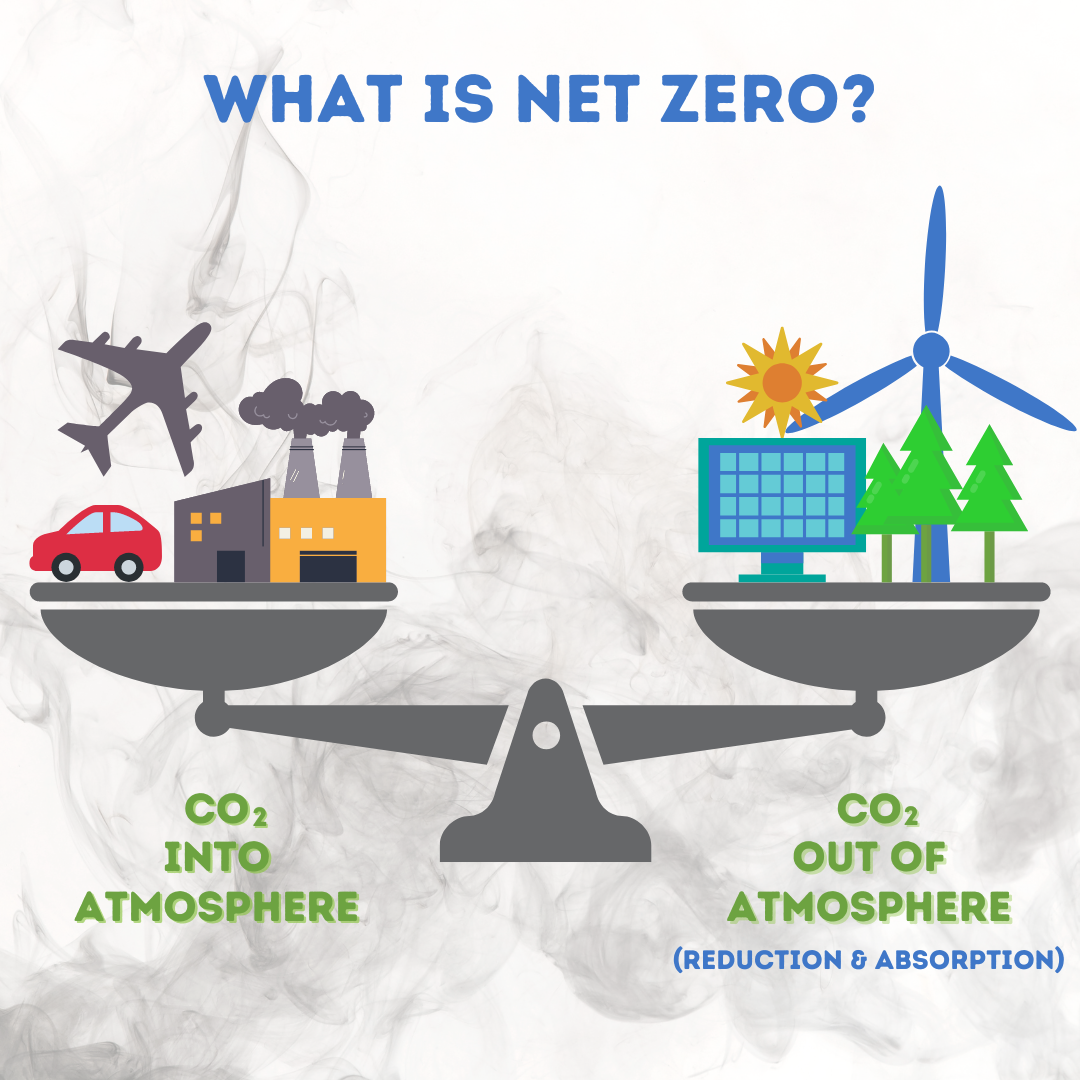
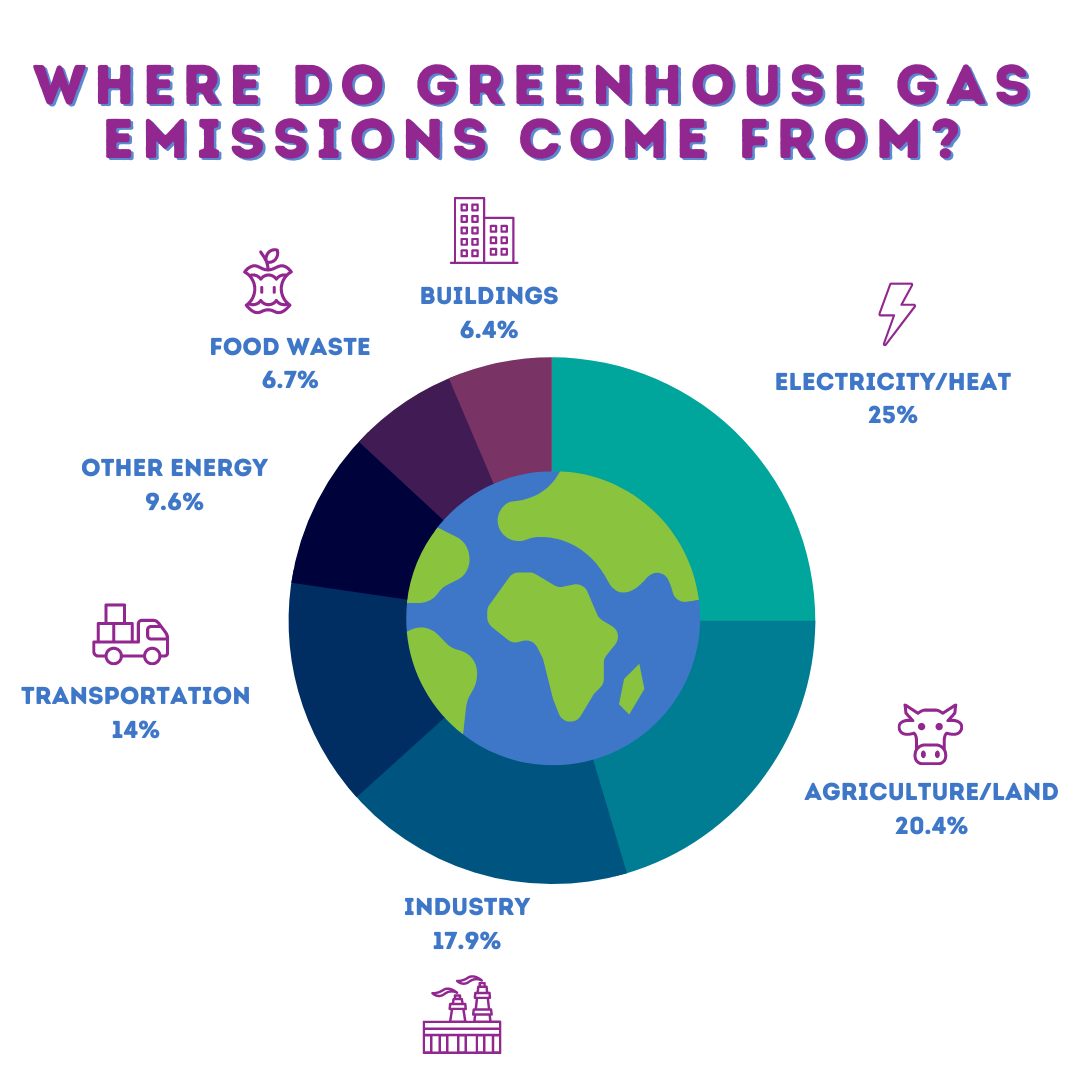
What are greenhouse gases and where do they come from?
Greenhouse gases are gases that trap heat in the atmosphere. According to the Environmental Protection Agency, the three most common greenhouse gases are carbon dioxide, methane, and nitrous oxide.
- Carbon Dioxide: mainly comes from the burning of fossil fuels like coal, natural gas and oil, solid waste, and trees and other biological materials, and is responsible for 79% of overall greenhouse gas emissions.
- Methane: is produced during the production and transport of coal, natural gas, and oil and also from livestock and other agricultural practices, as well as the decomposition of food and organic waste in landfills. Methane emissions are responsible for 11% of overall greenhouse gas emissions. It is more efficient at trapping heat than CO2 and its impact is therefore 25 times greater than CO2’s over a 100 year period!
- Nitrous Oxide: is emitted during agricultural, land use and industrial activities as well as the combustion of fossil fuels and solid waste and the treatment of wastewater. Nitrous oxide emissions are responsible for 7% of greenhouse gas emissions.
We can cut our output of greenhouse gas emissions in a number of ways, including small ways like driving less, eating less meat, and diverting our food waste, to big ways like switching over to electric vehicles and clean sources of energy like wind and solar.
Removing emissions out of the air is more complicated. Forests and oceans do this naturally, but there are also new technologies, many in their infancy, that can capture carbon dioxide in the atmosphere and dispose of it.
We need both massive reductions in emissions as well as a dramatic scale up of the technologies for negative emissions in order for countries, communities, and individuals to meet our Net Zero goals.
What do greenhouse gases have to do with climate change?
The release of greenhouse gases into the atmosphere causes the Earth’s temperature to rise by trapping heat from the sun like a blanket.
Exactly how much greenhouse gas needs to be removed from the atmosphere depends on how much emissions can be cut, but both strategies need to be employed if we are going to slow down climate change and other detrimental environmental effects to our planet.
Our climate, which is the average weather in a place over a long period of time, is directly affected by the Earth’s atmosphere. Historically, the Earth’s atmosphere has naturally maintained a balance of carbon sources (processes that release carbon into the atmosphere) and sinks (processes that capture carbon out of the atmosphere).
However, since the Industrial Revolution, humans have disrupted the balance by releasing increased amounts of greenhouse gases into the atmosphere, leading to an accelerated warming. In the past 100 years, the Earth’s temperature has risen approximately 1.2 degrees celsius (34.15 degrees fahrenheit) and the amount of CO2 in the atmosphere has increased by over 50%.
What is the impact of a warmer planet (called CLIMATE CHANGE)?
Many people think that climate change only affects temperature, but the Earth is a complex inter-connected system. In addition to continued heat waves, warmer water changes the patterns of ocean currents, affecting global weather patterns; some places will become more susceptible to drought and wildfires, while other places will be pummeled by stronger tropical storms, flooding and erosion. The increase in the planet’s temperature will continue to cause melting glaciers, sea level rise, worsening droughts and heatwaves, reduced biodiversity, extinction of species, crop failures, displacement of entire towns/cities, and the spread of infectious diseases that are more easily transmitted in a warmer climate.
The World Health Organization has classified climate change as the greatest threat to global health in the 21st century. The good news is that communities and governments around the world are taking action to reduce greenhouse gas emissions, protect carbon stored in forests and vegetation, and identify and utilize new technologies to remove carbon from the atmosphere. In the 2015 landmark Paris Agreement, many countries agreed that climate change could only be tackled if countries worked together and there they pledged to keep global warming to no more than 1.5 degrees celsius.
What does this mean for Westport?
In 2017, the Town of Westport (by RTM resolution) was one of the first municipalities in Connecticut to announce its goal of becoming Net Zero by 2050. Unlike the Paris Agreement, Westport’s RTM resolution is not singularly focused on greenhouse gas emissions, but rather a holistic view of Net Zero:
“Be it resolved that the Town of Westport shall commit to using its best efforts to continue to support climate action to meet the Paris Agreement and become a Net Zero community by the year 2050, where the community has reduced its impacts across energy, water, and waste so that they are sustainably managed, using approaches that are economically viable, of social benefit, and environmentally responsible.”
As a town, we need to be AMBITIOUS about tackling climate change and our environment. Changing individual behavior is important, but we are even more impactful together. The RTM resolution is just the beginning of creating and nurturing a sustainable town for our children and future generations of Westporters. We must take a long-term view and seek out opportunities to innovate and implement green technologies, investing now, to improve our future.
What can I do to help?
- Transportation: Drive less; fly less. Carpool. Bike and walk. Use public transportation when possible.
- Energy: Conduct a home energy audit – insulate your home better to lead to less energy consumption and waste. Switch to electric – heat pumps and induction. And better yet, explore ways to switch to renewable energy – solar and geothermal are both viable options in CT.
- Waste: Be thoughtful about your waste. Reduce and refuse single use plastics (do you need that straw or plastic utensil when you are going home to eat that take out?)
- Buy better (if you eat meat, how was the meat raised and produced?)
- Buy smarter (only buy what you need)
- Recycle right (separate glass and bring to the Transfer station)
- Compost: Divert your food scraps and join the Zero Food Waste Challenge
- Stay Informed: Keep educating yourself for your health and your family’s health and the health of the planet. We need to spread awareness so that more people in our community are aware and engaged. Sign up for our newsletter for monthly articles, tips, and sustainable news.
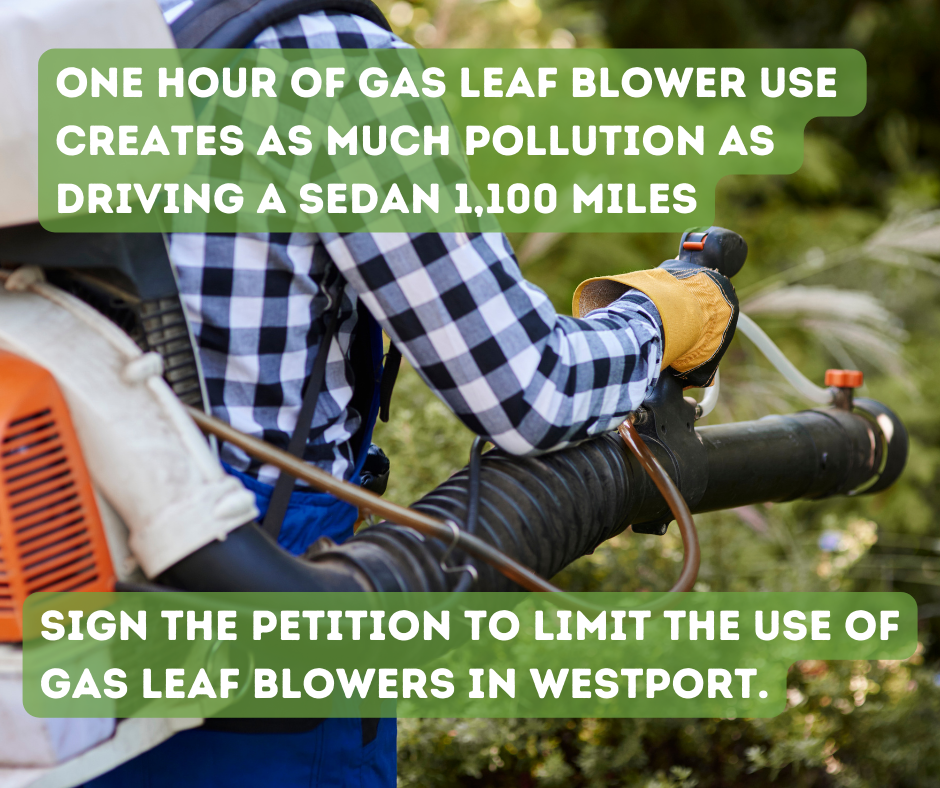
Help limit the use of gas leaf blowers in Westport!
The RTM (Representative Town Meeting) has recently shared a draft ordinance to limit the use of gas powered leaf blowers. Please review the information below and show your support by signing the petition, calling or writing members of the RTM, and attending one or more of the upcoming town meetings listed below.
Thank you for your support!
Overview of the draft ordinance:
- Restricts gas blower use to ONLY between March 15-April 30 and October 15-December 31. Gas leaf blowers will not be allowed outside of these timeframes.
- The number of blowers used simultaneously is not limited — landscapers will be free to use as many blowers as needed during cleanups, regardless of lot size
- Battery and electric blowers are permitted year round
- No blowing of any kind permitted before 8 a.m. or after 5 .m., or on state or federal holidays
- The ordinance will not apply to town-owned property or to golf courses
- Enforcement will be managed through the Westport Conservation Department
Why should the Town of Westport restrict gas leaf blowers?
Gas leaf blowers are more than just a noise nuisance, they cause harm both from an environmental and human health perspective. Not to mention, battery-powered equipment has become an increasingly practical alternative, causing less air and noise pollution.
This partial ban of gas leaf blowers is a small step to reduce the impact of climate change, provides an opportunity for Westport to lead the state in progressive legislation, and also supports our town’s resolution of becoming Net Zero by 2050.
Climate:
- Westport (and Fairfield County) already has one of the highest ozone levels in the state. Gas leaf blowers are a major source of nitrogen oxide, which combines with VOCs and sunlight to form additional ground-level (“bad”) ozone. The EPA recommends any area with high ozone levels restrict gas leaf blower use.
- One hour of gas blower use creates as much pollution as driving a sedan 1,100 miles; small engines, like those found in gas leaf blowers, are a larger source of smog-forming emissions than passenger cars.
Environment:
- The high velocity air jets used in gas leaf blowers destroy vegetation as well as insect/pollinator/animal habitats.
- This ordinance supports “Leave the Leaves” initiatives recommended by environmental groups. Allowing fallen leaves to break down naturally, helps improve the soil quality and provides countless wildlife species with habitat.
- Fuel spillage associated with gas leaf blowers contribute to overall groundwater pollution.
- Experts do not recommend blowing grass clippings in the summer, especially in areas susceptible to drought.
Human Health
- The operation of gas leaf blowers contributes to hearing loss. The World Health Organization advises that noise becomes harmful at 55 dB. According to the CDC, a gas leaf blower emits noise at 90 dB. Even from 800 feet away, the noise has been found to exceed the 55 dB threshold.
- Exposure to noise not only harms hearing, but the CDC notes that it can lead to health problems including stress, anxiety, depression, high blood pressure, and heart disease.
- Gas powered leaf blowers are a major source of carbon monoxide, which when inhaled cause fatigue, headaches, confusion, and dizziness due to inadequate oxygen delivery to the brain.
TAKE ACTION
Sign the Petition:
Click here to sign the change.org petition in support of this ordinance.
Email or Phone the RTM:
- Send a bulk email to our local Representative Town Meeting Members at: RTM-DL@westportct.gov
- You can also find emails and phone numbers to individual members of the RTM here.
Sample Email/Script: Hello, I am a current Westport resident, residing at [insert address]. I am writing in support of the draft ordinance limiting the use of gas leaf blowers to only from March 15 – April 30 and October 15 – December 31. Gas leaf blowers are not only a nuisance but cause a significant environmental and human health concern. To help our community reach the goal of becoming Net Zero by 2050, I fully support this ordinance. Thank you.
Attend RTM Meetings:
RTM Environment Committee
Tuesday, September 27, at 7:30pm via Zoom
Join Zoom Meeting
Phone: +1 646 876 9923 US (New York)
Meeting ID: 899 9191 2546
Passcode: 315247RTM Finance & Public Works Committee
Wednesday, September 28, at 7pm
Westport Town HallRTM Ordinance Committee Meeting
Monday, October 3, at 1pm via Zoom
Join Zoom Meeting
Phone: +1 646 876 9923 US (New York)
Meeting ID: 856 0121 2979
Passcode: 632289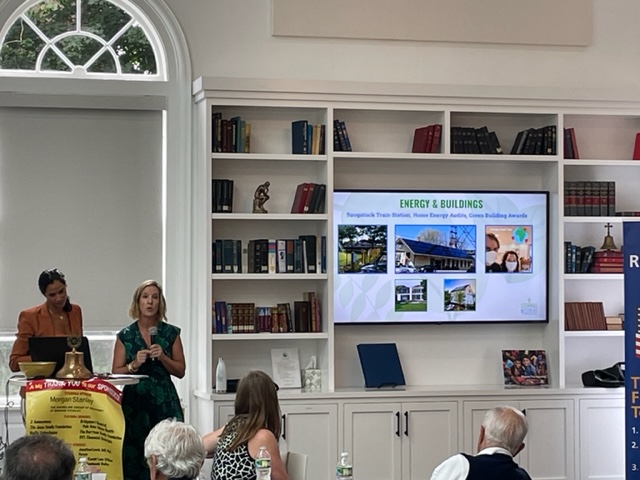
Sustainable Westport Co-Directors Speak at Westport Rotary Club Meeting
At the Westport Rotary Club meeting this week, Co-Directors Gately Ross and Johanna Martell discussed the meaning of “Net Zero” and outlined the ways Sustainable Westport is supporting the town’s goal of becoming a Net Zero community by the year 2050.
“It was a privilege to connect with members of the Westport Rotary. It was a wonderful opportunity to raise awareness, reinforce our mission, make connections, and showcase our progress. This year, we won a Westport Rotary Community Partnership Organization grant, so we were thrilled to unveil our plans for a K-12 Westport Art Contest promoting glass recycling (coming this school year!),” shared Johanna Martell, Co-Director of Sustainable Westport.
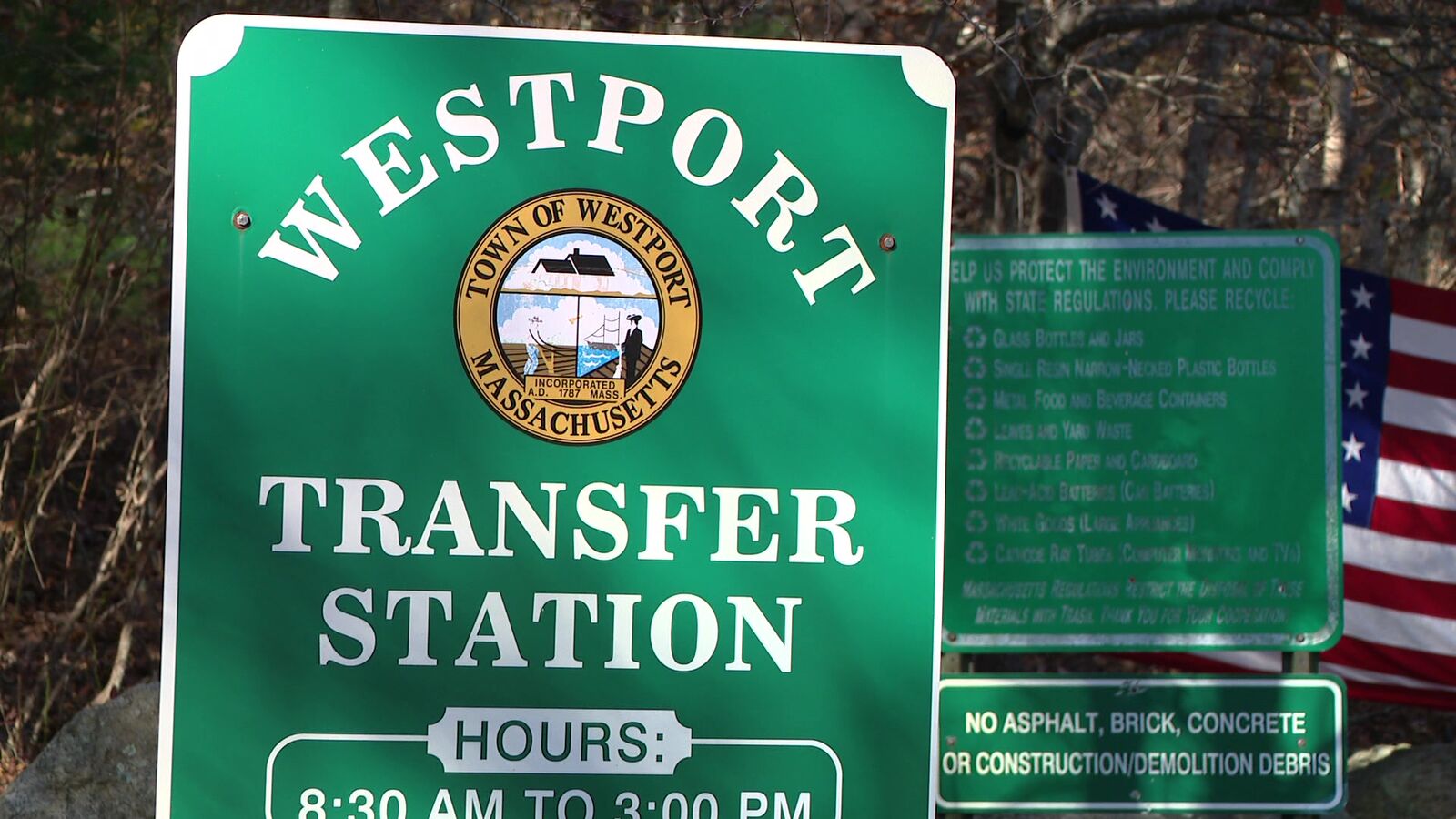
Westport’s Trash: Increasing Waste and Rising Costs
“Out of sight, Out of mind” is an adage we often hear when it comes to trash. The moment the garbage man arrives at your house, it’s out of your hands and not your problem any longer… but this is NOT the case in Connecticut!
In our July newsletter, we addressed MSW (municipal solid waste, or “trash”) on a state and regional level. Next, we examine the local issues in Westport and how it affects you as an environmental citizen and taxpayer.
What ACTUALLY happens when trash leaves your house?
Private haulers across Westport (there are currently eight options) collect trash and deliver it to the transfer station. Some collect trash and recycling on alternate days while others collect both on the same day into trucks that have separate compartments for each. Alternately, Westport residents are welcome to bring their own trash to the transfer station for dumping, free of charge, during operating hours.
At the transfer station, the contents of the truck are dumped into a pit by the haulers (or manually thrown into the pit by residents). The pit contains a hydraulic ram that serves to compact the trash into a closed trailer. Westport has two pits and thus two compactors. When the trailer is full, it is pulled away from the compactor and a new empty trailer is put in its place. Trailers are then driven to WIN-Wheelabrator, our regional waste-to-energy plant in Bridgeport where the contents are tipped and weighed before incineration. The empty trailers then return to the Westport transfer station.
Who pays for waste management?
All of the haulers that service Westport pay an annual licensing fee to the town based on the number of trucks in their fleet and their respective cubic yard capacity. Other than that, haulers have no other financial responsibility for waste management and do not pay fees to dump (or “tip”) at the transfer station. All other waste management costs are included in the Town of Westport budget, which is funded, as you know, by taxpayers. When the costs to manage waste rise, taxpayers can expect to carry the burden.
What does the town’s waste management budget consist of?
These costs include three primary components: 1. Management of the Westport transfer station; 2. Hauling trash to Wheelebrator and 3. Tip fees for disposal (incineration services) at Wheelebrator.
In 2021, Westport fees to Wheelebrator for transportation and tipping were $16-$17/ton and $65.75/ton respectively. That is far less costly, both in fuel and in CO2 emissions, than trucking the trash out of state to landfills, and it avoids dumping Connecticut trash on other communities. However, these costs still translated to approximately $1.5 million dollars to the town and taxpayers (and that does not even account for recycling, other contract services, or management of the transfer station!). 2022’s current waste expenditures are 13% higher than last year (to date).
Westport is part of a 12 town consortium, the Greater Bridgeport Regional Solid Waste Committee (GBRSWIC), engaged in an Interlocal Agreement with Wheelabrator through 2024. By collectively negotiating as a group, Westport negotiates more competitive pricing and also benefits from more consistent costs for budgeting purposes.
Westport Waste – Sustainability Statistic
In fiscal year 2021-2022, Westport produced 800lbs (.4 tons) of trash per capita. This has increased by 20lbs since fiscal year 2015-16.
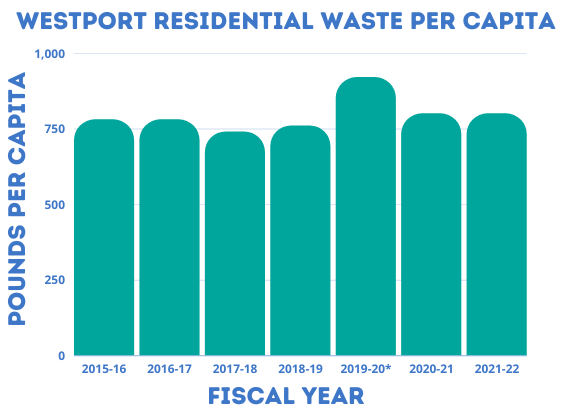
As addressed in our recent blog, Connecticut’s waste-to-energy infrastructure is increasingly under strain, which will result in rising costs for the disposal (and recycling) of waste.
Are there alternatives?
Traditional municipal waste disposal programs, whether operated by towns or by private haulers, charge a flat rate for residential waste pick-up. However, PAYT (“Pay as you Throw”) is a new approach to waste that is gaining momentum with support at the national and state level. In this model, households are charged based on the amount of trash they generate (by either volume or weight) rather than through a fixed fee or property tax. PAYT shifts responsibility onto individual households, treating trash like electricity, water or other utilities where there is a variable rate depending on the extent of service utilized. The U.S. Environmental Protection Agency (EPA) strongly encourages the PAYT program because it addresses three intersecting, fundamental issues: Environmental Sustainability, Economic Sustainability, and Equity. There are over 7,000 communities nationwide that offer PAYT programs, nine of which are in Connecticut.
In Connecticut, the Department of Energy and Environmental Protection (DEEP) promotes a PAYT program called SMART (“Save Money and Reduce Trash”). Residents are charged based on unit pricing of waste collected weekly (per gallon, based on the bag sizes sold and distributed by the town). Other than that, the system of collection remains the same. According to DEEP, CT communities that have implemented SMART have reduced waste by 40 – 55%! This translates to an average savings of 200-300 lbs/person/year, not to mention significant municipal savings in transportation and tipping (incineration). By making citizens more aware of their waste, SMART encourages citizens to reuse or donate, recycle, and compost, which may help the state reach its statutory recycling and reduction goal of 40%. While SMART is not mandated, there is current discussion around making this program a mandatory legislation.
Does “trash talk” make you feel overwhelmed? What can you do?
REDUCE, REUSE, RECYCLE and DIVERT FOOD WASTE. AND SPREAD THE MESSAGE.
Every little bit does make a difference! Be thoughtful in your purchasing and favor reusable over disposable (even if it requires a bit more money or personal energy). Repair broken items instead of tossing them away. And the great news is that Westport has a number of programs currently in place to assist and support your efforts to reduce overall waste:
- Separate your glass from other recycling and deposit at the transfer station
- Redeem your cans and bottles at participating facilities
- Join the Zero Food Waste Challenge
- Learn about all the other items that can be individually recycled and where!

Eco-Friendly Tips for Back to School Shopping
There is nothing that encompasses the spirit of “back-to-school” than the tradition of shopping for new school supplies! The excitement and back-to-school hype can lead to over-purchasing or blindly supporting products that are harmful to the environment. This year, consider taking steps to make your school supply shopping more eco-friendly.
To start, ask yourself these questions:
- What can we reuse? Before you make a shopping list, take an inventory of what you already have. Oftentimes, you will find unused notebooks, pens, pencils, and erasers throughout your home that can be used for the upcoming academic year.
- What do we REALLY need? While most kids like to get a new backpack or reusable water bottle each year, consider what is really necessary to purchase this year.
- What do we no longer need? If you find things that still have a useful life that you no longer need, consider donating them. Ensure you recycle or dispose of any products that cannot be used properly.
- What can you purchase second hand? Check out eBay or Facebook Marketplace for books, graphing calculators, and other technology before you purchase new!
Now it’s time to shop!
Look for products made from more natural materials like metal, wood, and recycled plastic. In general, anything that can be reused should be your priority. Try to avoid things made from virgin plastic and always consider the quantities you purchase – you can always replenish your supplies throughout the year.
Looking to shop sustainably?
Eco Evolution is a locally-owned eco-friendly store run by @the.eco.dude. With a storefront in Norwalk as well as online shopping, you can support a local business while shopping consciously.
You can also check out EARTH HERO, a low waste retailer that has a vast selection of eco-friendly school supplies, like Sprout plantable pencils, Honey Sticks beeswax crayons, Terra Thread backpacks, and Onyx & Green organic general supplies.

How to Make School Lunches and Snacks More Sustainable
It’s that time of year again where families begin to prepare for the upcoming school year. This year, take the opportunity to make a few small changes to the way you prepare and package your child’s snack and lunches. If you send your child with lunch most days of the year, even making a few small changes from this list will make a huge impact on the amount of waste you produce.
Enjoy these eight tips and good luck making a more eco-friendly lunch this year!
1. Use Reusable Sandwich and Snack Bags
This is a big one! Cut your dependence on zip-top bags and invest in reusable sandwich and snack bags. There are options made of coated fabric, which can be machine washed, or silicone, which are freezer-safe, microwave-safe and dishwasher-friendly. While reusable bags are more expensive, they will save you money in the long run and will help reduce plastic waste!
2. Provide Reusable Water (or Juice) Bottles
If you haven’t already, invest in reusable water bottles for your child to greatly reduce the amount of waste your child creates each year. \
3. Consider Other Reusable Wraps and Containers
Instead of plastic wrap, tin foil or plastic containers, try reusable beeswax-covered cloth as an alternative to plastic and foil wrap. Stainless steel containers are also a great option that come in a variety of sizes. They are durable, last forever, and you don’t have to worry about chemicals leaching into your child’s food. Get creative with how you can use already purchased containers to pack your meals.
4. Pack Your Own Utensils
Invest in a set of lunch utensils to be sent to and from school with your child. Plastic utensils cannot be recycled, so they end up in the trash. Avoid contributing to this waste by bringing your own or purchasing biodegradable utensils instead.
5. Use Washable Napkins
Skip disposable napkins or paper towels and opt for washable napkins instead. They can be tossed in the washing machine instead of throwing them away and adding waste to the landfill. Try using these at home as well, if you aren’t already, to reduce your paper waste!
6. Avoid Pre-Packaged Foods
All parents appreciate the ease of individually wrapped goldfish bags or applesauce pouches. When you can, purchase items in bulk and use your reusable snack containers instead of purchasing pre-packaged foods. By cutting out a few pre-packaged options, you will greatly reduce your overall contribution to package waste.
7. #MeatlessMondays
If possible, try skipping meat in your child’s lunches on Mondays. Most kids love a good sunbutter and jelly or bagel “fun” lunch. Going meatless for lunch even one day per week can make a big environmental (and health) difference. If you can’t skip the meat, consider purchasing local, organic meats. These meats are healthier, taste better, and also help reduce your overall carbon footprint.
8. Zero Food Waste
Whether it’s composting your lunch scraps or getting creative with how you use food scraps, practicing zero-waste cooking is an important component of reducing overall waste. Buying locally sourced food and produce is a great way to make sure your food is sustainably harvested.
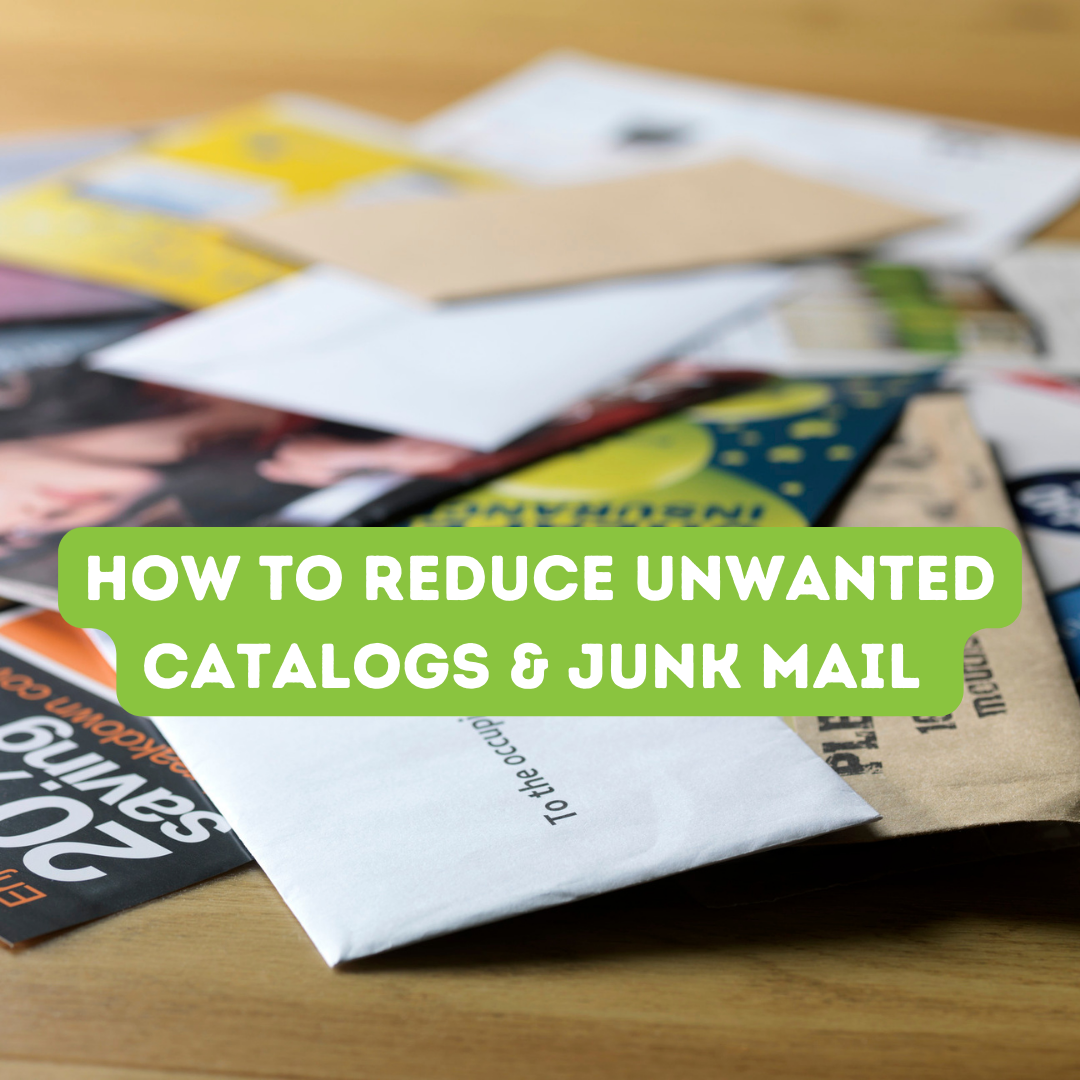
How to Reduce Your Junk Mail and Catalogs
According to the most recent estimate completed by NYU Law (2016), 5.6 million tons of catalogs and marketing-junk mail end up in landfills each year. That equates to about 100 million trees that are cut down to produce mail that is immediately discarded. Not to mention, all catalogs and junk mail can be recycled! With easy access to information and shopping online, many people find the clutter of junk mail and catalogs to be annoying and unnecessary.
Did you know that you can drastically reduce the amount of junk mail and catalogs you receive? These services can help you fight waste and simplify your life!
FREE/MINIMAL FEE
Catalog Choice: Save up the catalogs you receive over the course of each month and cancel them in one big sweep on Catalog Choice at the end of the month. Sign up for a free account then simply type in the catalog name and your info to opt out. For any catalogs that aren’t part of their database, Catalog Choice provides the phone number to call directly.
Credit Card Offers: You can opt-out of offers that come from one of the four major consumer credit reporting agencies for 5 years by using optoutprescreen.com.
Mailing Lists: You can register online with the Direct Marketing Association’s mail preference service to remove yourself from other national mailing lists. For a one time fee, you can remove yourself from common mailing lists for 10 years!
- Online registration: $2 fee for online processing
- Mail-in registration: $3 fee, submit check or money order payable to ANA (no cash) to DMAchoice, Consumer Preferences, P.O. Box 900, Cos Cob, CT 06807
Valpak: You can suppress your address from Valpak (those blue envelopes filled with coupons) mailings here.
RetailMeNot: Unsubscribe from their mailers here.
PAID SERVICE
The PaperKarma app helps you stop junk mail for a yearly fee of $25. Using your smartphone, you take a picture of your unwanted mail and press “Unsubscribe” to remove yourself from PaperKarma’s partner marketing lists. In about 24 hours you’ll receive a notification that you’ve been unsubscribed. PaperKarma works with most associations, catalogs, charities, coupon offers, credit offers, direct marketers, insurance offers, local mailers, magazines, and national mailers.
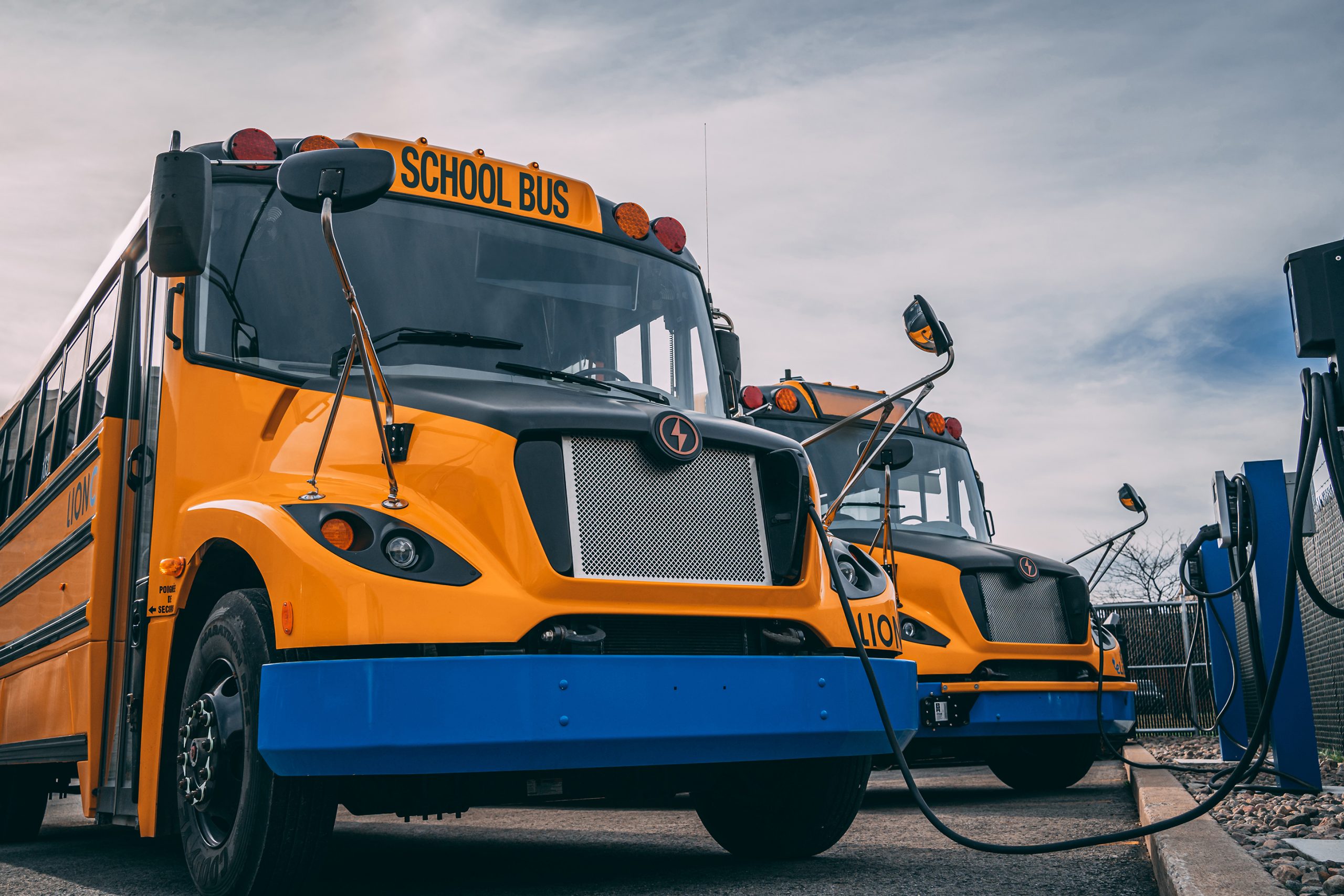
Should Westport Invest in Electric School Buses?
Would you support the Westport School District going electric? The EPA is offering $5 billion dollars in funding rebates to school districts for the replacement of diesel buses with zero-emissions or electric school buses – the application deadline is August 19. Learn more about the grant here.
Why should we transition to electric buses?
- PROTECT OUR CHILDREN: The exhaust from diesel buses negatively impact the air quality and are harmful to our community. Diesel buses also produce noise levels of 85 decibels – the EPA recommends avoiding anything higher than 80 decibels. Transitioning to electric vehicles are safer for our students and our community.
- PROTECT THE ENVIRONMENT: Electric buses provide cleaner transportation by reducing both harmful air and noise pollution.
- LOWER COSTS: Electric buses result in long-term cost savings for the district; From a fuel standpoint, electricity is cheaper than diesel and electric engines also require less maintenance. By taking advantage of the EPA grants, Westport can also significantly offset the cost of this capital investment.
- SHOW OUR COMMITMENT: By taking advantage of this opportunity, Westport would be one of the first districts to meet the state’s Clean Transportation Bill (SB4). The law outlines the goal of a state-wide electric bus fleet by 2035.Transitioning to electric buses signifies Westport’s commitment to becoming a Net Zero community by 2050. Our district’s leadership and commitment to progress will help encourage other districts to make the change!
There are many myths about electric vehicles stemming from the fossil fuel industry. Check out the EPA website dedicated to providing accurate information about the benefits of electric vehicles. You can also learn more about electric vehicles on our website.
We hope to encourage the Westport School District to apply for the 2022 EPA Clean School Bus Rebate to transition Westport’s diesel-guzzling buses into a fleet of electric buses! You can help by contacting your Representative Town Member, BOE members, and the school superintendent to let them know you support transitioning to EV buses and applying for the EPA grant.
